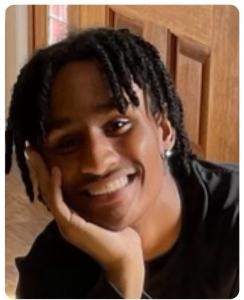
Washington Informer Article Cites Rising Overdose Deaths In Black Communities
Over the past decade, deaths have skyrocketed in Black and Indigenous populations, and now overdose death rates have begun to diverge by race.
WASHINGTON, DC, UNITED STATES, February 25, 2025 /EINPresswire.com/ -- On December 8th, the air was crisp as Kimberly Douglas, of Bowie, MD, made her way to her son Bryce’s gravestone in National Harmony Memorial Park in Landover. It had been nearly 18 months since she lost the 17-year-old to a fentanyl overdose. This day of remembrance is a stark reminder of the urgent need to prevent similar tragedies.
Tracie Gardner, Executive Director of the National Black Harm Reduction Network, and Daliah Heller, Vice President of Overdose Prevention Initiatives at Vital Strategies, wrote about Douglas’ ordeal in an opinion piece for the Washington Informer.
“The pain of the day Kimberly lost her son is seared into her soul,” they wrote in the piece. “She worked at her home office in Bowie in the early afternoon. Bryce was home early from school and napped in his bedroom, just one room away. When Kimberly found him unresponsive, she frantically searched her home for naloxone, a medicine that reverses an overdose and prevents death. In her panic, she couldn’t find it. It wasn’t until later, through tears of grief and disbelief, that she discovered the naloxone — in Bryce’s pocket. He had it all along.”
The authors note that over the past five years, a staggering half million people died from overdose in the United States. But recent reports suggest a steady upward trend over two decades is reversing. The latest data from the CDC shows a 17% decline in deaths from September 2023 through August 2024. Over the past decade, however, deaths have skyrocketed in Black and Indigenous populations, and now overdose rates have begun to diverge by race. A recent analysis of CDC data from the O’Neill Institute shows that through 2023, in many states, while deaths were leveling off and even declining among white populations, they were still rising in Black and Indigenous populations.
“…the opioid-driven overdose crisis has been widely represented as predominantly impacting white communities, leaving Blacks less informed,” they write. “Drugs popularized in hip-hop culture, like Percocets and Lean (codeine), aren’t cast as opioids. Many people are unaware that ingredients such as fentanyl are widespread in the drug supply, increasing risk across the board.”
In an interview, Douglas said she has reached out to other Black families, particularly mothers with teenagers and young adults who need to know about naloxone. She has started a Facebook group, Black Moms Against Overdose, to share information. “I think it's super important because there's such a stigma in Black families with sharing anything that has to do with substance use disorder or mental health, especially around overdose and death,” she said. “After Bryce passed, I tried to immerse myself in this world and inform others about what our children face and how we can save them.” Black Moms Against Overdose can be reached at https://www.facebook.com/groups/569231315512728/ .
Gardner and Heller assert that now is the time for action. “Local governments should establish and support partnerships with Black community leaders to share overdose prevention information and naloxone resources with local communities,” they write. “Engagement is especially critical now to ensure equitable access to naloxone and reduce disparities and overdose deaths for everyone.”
Naloxone is easy to use and available for free from most local health departments and a growing number of community partners in cities and towns across the country. It is also available for purchase over the counter at any pharmacy. The key to saving a life with naloxone is administering it as soon as you recognize any sign of an overdose. Anyone who is in the community with someone who uses drugs - family, friends, local businesses, neighbors, and associates — can be activated and prepared to help.
“With community partners, we are launching a seven-city “Naloxone In Black” media campaign in late March to promote access to the life-saving medication,” Gardner and Heller write.
To read the full article, click HERE.
Tony Newman
Vital Strategies
+1 646-335-5384
tnewman@vitalstrategies.org
Distribution channels: Culture, Society & Lifestyle, Emergency Services, Healthcare & Pharmaceuticals Industry, Human Rights, U.S. Politics
Legal Disclaimer:
EIN Presswire provides this news content "as is" without warranty of any kind. We do not accept any responsibility or liability for the accuracy, content, images, videos, licenses, completeness, legality, or reliability of the information contained in this article. If you have any complaints or copyright issues related to this article, kindly contact the author above.
Submit your press release

